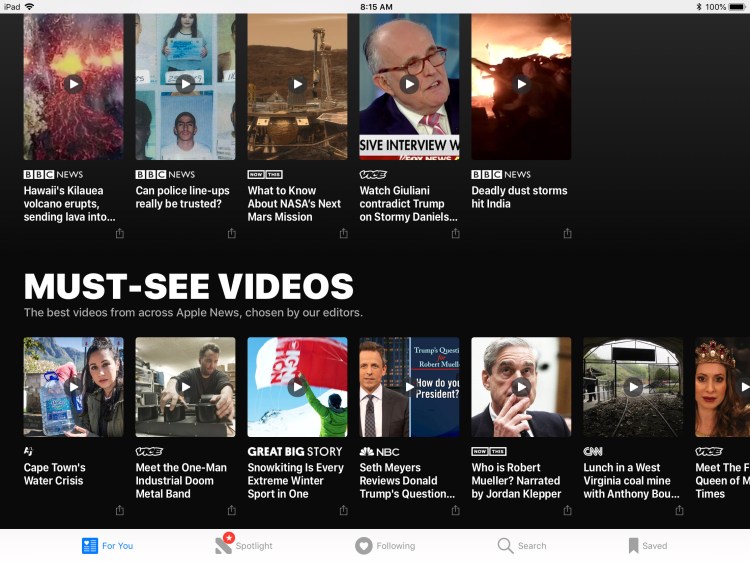Apple’s evolution of its Apple News service now involves directly paying publishers for editorial content in order to secure exclusive access before social media and other outlets, Digiday reports today. The media publication says that Apple paid BuzzFeed News a fee for the first airing rights to documentary episodes and cut the site “a share of the revenue from pre-roll ads that Apple sold against the episodes.”
Under the Apple-BuzzFeed deal, Apple News gained access to three BuzzFeed documentary videos before BuzzFeed uploaded them to Facebook, YouTube, Twitter, or even its own mobile app. The result was “several hundreds of thousands of views” through Apple News, compared with around 110,000 views when the videos later became available through other sources.
The story spotlights how modern media and technology company deals are eroding the historic divisions between publications’ editorial and business sides. Beyond paying BuzzFeed for access to the content, Apple offered a special promotion by pushing the show “in Apple News’ featured videos galleries for the entire weekend.” On its side, BuzzFeed sent a special push notification to readers to promote the videos while they were Apple exclusives.
Digiday describes Apple’s move as a sign of how serious the company has become about “competing with Facebook, Google/YouTube, and Twitter as a distribution outlet for news publishers.” The report says that BuzzFeed head of audience development Roxanne Emadi sees the deal as a way to build “a great news business” by funding “quality premium shows and series, and not throwaway social videos, which I think is really new for news.”
June 5th: The AI Audit in NYC
Join us next week in NYC to engage with top executive leaders, delving into strategies for auditing AI models to ensure fairness, optimal performance, and ethical compliance across diverse organizations. Secure your attendance for this exclusive invite-only event.
The flip side is that Apple is also boosting its direct financial involvement with publications that cover its own announcements. Although companies have advertised in “independent” newspapers and magazines for as long as anyone can remember, the publications have historically not depended upon those advertisers for distribution, marketing, or advertising representation to third parties. Consequently, reputable publications rarely feared the result of angering an advertiser with critical content.
However, at a time when ad revenues have declined and new digital distribution options such as Apple News are growing in popularity, publications appear to be more willing than ever to make deals that would have been unthinkable a decade ago. As a result, a publication covering Apple now might consider whether it’s worth risking its Apple News distribution, “featured” marketing, and ad sales over a less than complimentary story.
It’s unclear at this point whether Apple has deals to pay other publishers for exclusive Apple News content. In March, the company acquired Texture, which aggregates magazines into an all-you-can-read monthly service, and Apple reportedly plans to offer access to a similar service as a premium Apple News tier in the near future.

